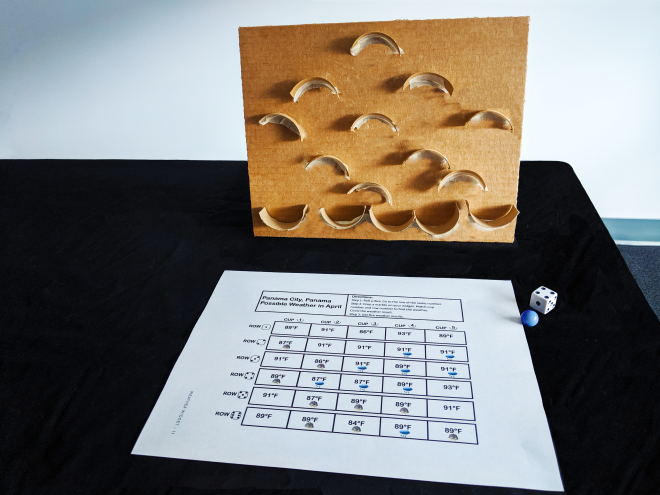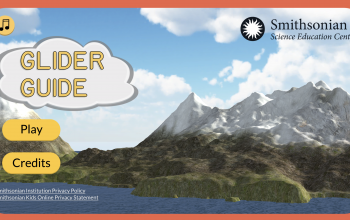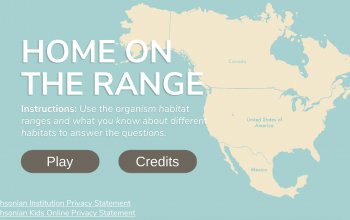Weather Widget
Weather Widget
Smithsonian Science for Makerspaces: Weather Widget engages students in developing predictions of future weather events based on patterns found in data. Using computational thinking and data analysis, students will investigate how different locations can have different weather effects and will design solutions to problems caused by unique weather conditions.
Class periods: 1-2
Preparation time: 40 minutes
Vocabulary Words: meteorologist, predict, range, weather
Downloads:

Spanish translations for the Smithsonian Science for Makerspaces challenges are made possible by a grant from the Smithsonian Women’s Committee.
Student Objectives:
- Analyze patterns in weather data tables to predict future weather events.
- Identify ways weather can be hazardous and ways to reduce its impact.
Diciplinary Core Ideas:
- Scientists record weather patterns across different times and areas so that they can make predictions about what kind of weather might happen next. (3-ESS2-1)
- A variety of natural hazards result from natural processes. Humans cannot elimante natural hazards but can take steps to reduce their impact. (3-ESS3-1)
Science and Engineering Practices
- Computational thinking
- Analyzing and interpreting data
Crosscutting Concepts
- Patterns
- Interdependence of science, engineering, and technology
- Science is a human endeavor
The teacher will share the following passage with students:
Ada is a researcher. She will travel to two cities that are in different countries. Ada will go to the Smithsonian Environmental Research Center in Edgewater, USA She will also go to the Smithsonian Tropical Research Institute, in Panama City, Panama. While at those places Ada will study and help the local wildlife.

Image Credit: Clker-Free-Vector-Images/Pixabay
Click here to open image in a new window
Ada wonders what the weather will be like on her trip. She will travel to both cities in April, but how can we predict the weather for Ada?
Meteorologists are scientists who study and try to understand the weather. They look at a lot of weather data such as temperature, windspeeds, and storms. Meteorologists use computers that try to predict future weather by reviewing weather data from earlier years.
The computer model is not exact, but it helps meteorologists create a range of possible weather, from the coldest temperature to the warmest temperature. This computer model also helps us plan for future weather storms, like rain or lightning. Meteorologists use many different ways to let us know we need to plan for the weather, like TV, newspapers, and the Internet.
Let’s help Ada plan for her trip to Edgewater and Panama City. We will create a weather model for Ada’s trip to predict the temperature and the number of storms.
Discussion Questions:
- What do you think the April weather will be like for Ada’s trip to Panama City? How about Edgewater?
- How can Ada protect herself from bad weather like rainstorms or thunderstorms?
- Have you seen a weather prediction today? Where did you see it?
Smithsonian Connections
The Smithsonian Environmental Research Center offers free educational resources and school visit programs for students interested in how climate affects wildlife. https://serc.si.edu
The teacher will:
- Separate the class into groups of three or four students each.
- Print one copy of the Weather Widget: Directions worksheet and the Edgewater and Panama City Possible Weather worksheets for each student group.
- Print one copy of the Weather Widget: Design It! worksheet and the Weather Widget: Test It! worksheet for each student.
- Provide each student group with the following materials:
1 8 1/2 X 11 inch cardboard sheet
1 Paper towel cardboard core
1 Roll masking tape
Scissors
1 Marble
1 Dice
Student groups will:
- Read the Directions worksheet found in their worksheet packet and review it with their teacher.
- Make their weather widget.
Maker Tips
Students should design their weather widget so that a falling marble can reach all five bottom cups. If they can’t engineer a way to do this, they can add additional drop points or redesign their bumper layout.
Maker Directions
Step 1:
- Cut the cardboard roll in half along the long side.
- With a marker or pencil, mark lines on one halkf of the roll, 1 inch apart.

Step 2:
- Cut along the marked lines, so that you have five U-shaped cup pieces.
- Tape the five pieces in a row along the bottom of the cardboard sheet.

Step 3:
- On the other half of the roll, with a marker or pencil, mark lines 1/2 inch apart.
- Cut along the marked lines, so that you have 10 skinny U-shaped strips.

Step 4:
- Design a pattern with the 10 skinny strips so that they will bump a falling marble into one of the five cups at the bottom of the cardboard sheet.
- Tape the skinny strips to the cardboard sheet.

Step 5:
- Decide on a drop point for your marble. Mark it with an X on the cardboard sheet.
- Tilt your widget upward.
- Drop the marble from the drop point.
- Retry 20 times.

Step 6:
- Can the marble land in each of the bottom cups?
- If not, try to redesign your bumper pattern. Or you can add a second marble drop spot.

- Each student group will need the Possible Weather worksheets for Edgewater and Panama City.
- Each individual student will use the information on the Possible Weather worksheets to fill in their own Design It! worksheet.
- Combine the class together to discuss and share answers to the discussion questions on the Design It! worksheet.
- Student groups will review the two Possible Weather worksheets. Then individual students will make weather predictions for Ada’s trip to both cities. Students will record their predictions on the Test It! worksheet.
- Using their weather widgets and the Possible Weather worksheets, students will find five weather results that represent Ada’s actual travel weather conditions. Student groups should read the directions box at the top of the Possible Weather worksheets to learn how to get a weather result.
- After getting five weather results using their weather widgets, individual students will record their results on the Test It! worksheet.
- Individual students will also complete the discussion questions on the Test It! worksheet.
- Combine the class together to share answers to the discussion questions on the Test It! worksheet.
Additional Discussion Topics:
What are some similarities and differences in how groups decided their weather predictions?
Were there any surprising or unexpected weather results they got from the widget?
The teacher should highlight that real weather events are based on conditions in the atmosphere and are not a random selection process.




